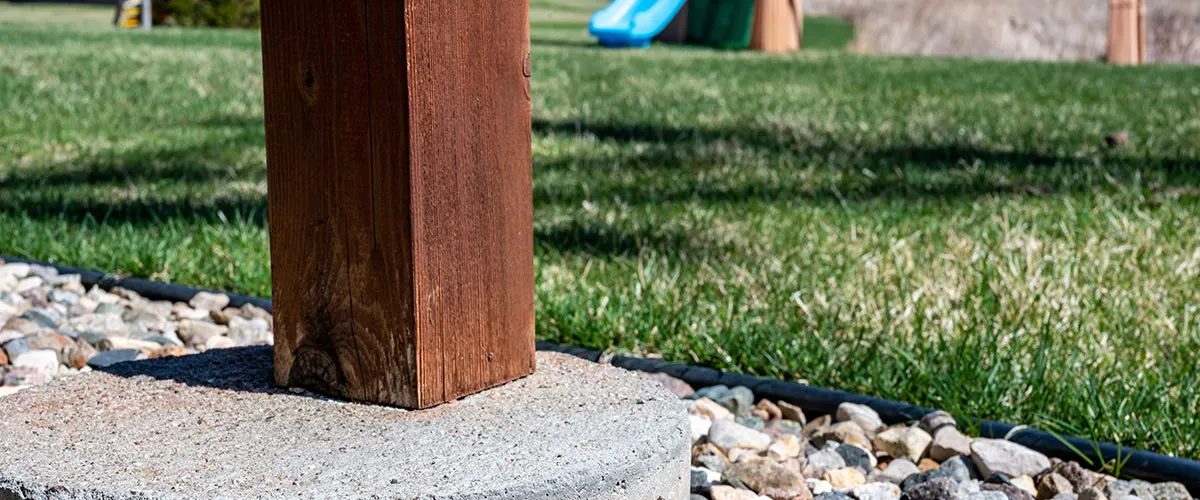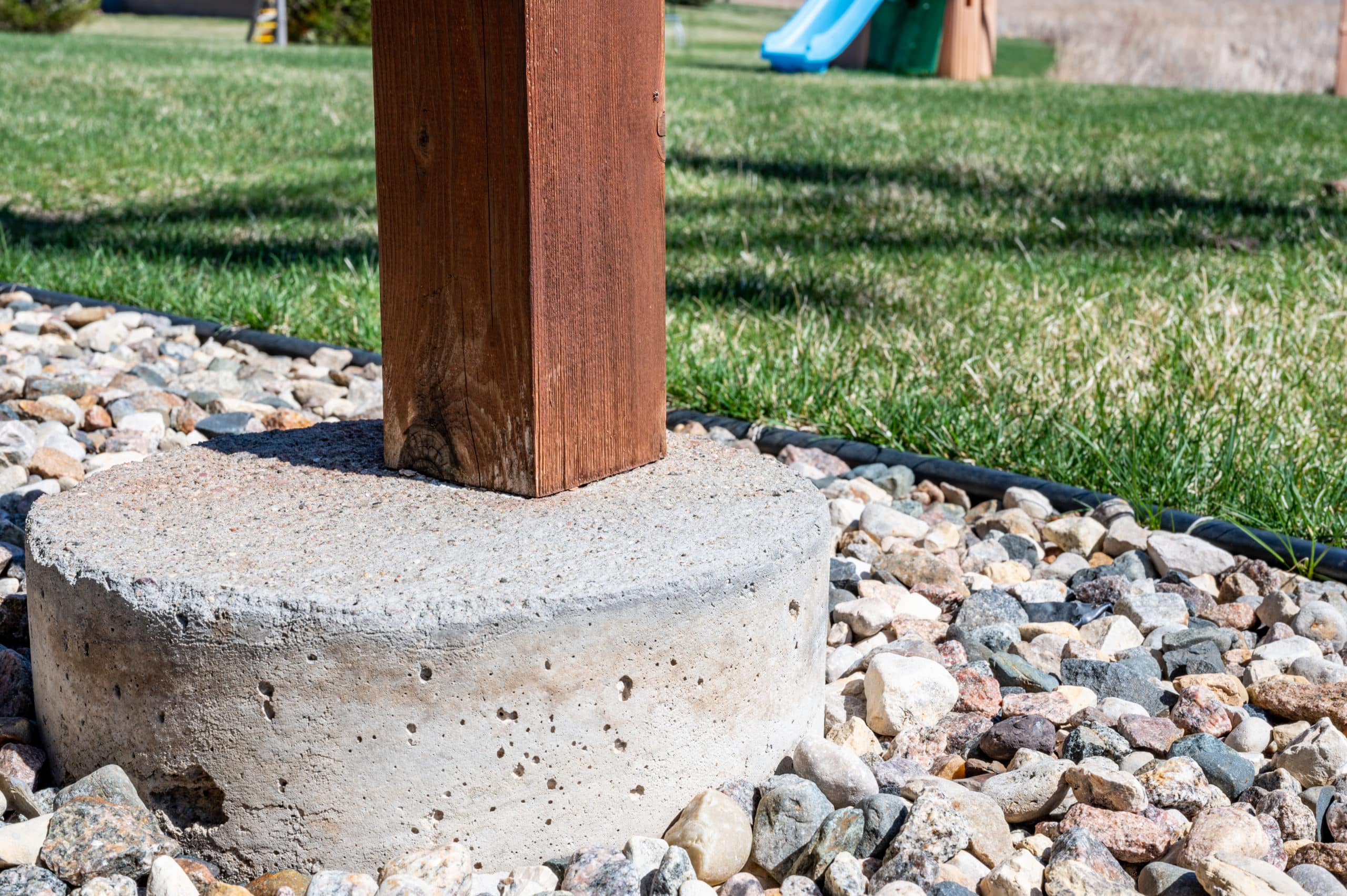Solid Ground, Solid Structure: The Basics of Deck Footings Installation
Solid Ground, Solid Structure: The Basics of Deck Footings Installation
Blog Article
Improve Your Deck's Security With Correct Deck Ground: Make Certain Durable Durability and Safety And Security
When it concerns developing a deck, guaranteeing its stability and durability is of utmost importance. One essential element that usually gets overlooked is the appropriate setup of deck grounds. These grounds function as the foundation of your deck, providing the necessary assistance and stability to stand up to the examination of time. By recognizing the influence of dirt problems and selecting the ideal products, you can enhance your deck's stability and guarantee its durable sturdiness and safety and security. So, just how exactly do you go around achieving this? In this conversation, we will certainly discover the relevance of appropriate deck footing, overview you via the detailed procedure of installation, and highlight the value of normal upkeep to preserve your deck's security.
Why Proper Deck Ground Issues
Appropriate deck footing is critical for making certain the security and long-lasting toughness of any type of deck framework. The deck footing, or foundation, functions as the support factor for the whole deck, supporting the weight of the framework and moving it to the ground listed below - Deck Footings. Without a solid footing, a deck can become unsteady, causing architectural failure and possible safety and security threats

Furthermore, proper deck ground assists to safeguard against dampness damage. Wetness can seep into the ground and damage the foundation, bring about rotting or decay. By using appropriate materials and techniques for the footing, such as concrete piers or helical piles, the deck can be raised in the air, decreasing contact with moisture and prolonging its life expectancy.
Comprehending the Impact of Soil Problems
The stability and resilience of a deck framework can be greatly affected by the dirt problems in which it is built. Comprehending the effect of dirt conditions is important for ensuring the durable toughness and safety of a deck. Various sorts of dirt have varying load-bearing capacities, drainage capacities, and expansion and contraction residential properties, which can all impact the stability of the deck.
One vital variable to think about is the soil's bearing capacity, which describes its ability to sustain the weight of the deck and any type of additional loads. Dirts with high bearing capabilities, such as compacted gravel or clay, are ideal for sustaining heavy structures like decks. On the various other hand, dirts with low bearing capacities, such as loose sand or soft clay, might need additional procedures to enhance security, such as deep footings or soil stablizing techniques.

Additionally, the dirt's tendency to expand and get with changes in dampness material can affect the security of the deck. Soils with high clay content are susceptible to substantial growth and tightening, which can result in changing and settling of the deck structure. Correct actions, such as setting up dampness obstacles or making use of alternative structure systems, may be called for to mitigate the effects of soil movement.
Selecting the Right Footing Materials
What variables should be considered when choosing the proper ground materials for a deck? Selecting the ideal footing products is important for making sure the security and durability of a deck. When making this choice., a number of elements need to be considered.
To start news with, the kind of soil in the location plays a crucial function in figuring out the suitable footing materials. Various dirts have varying load-bearing abilities, so it is essential to select materials that can adequately support the weight of the deck and any kind of potential lots it might bear.
Secondly, the climate and climate problems of the area should be taken into account. In areas with extreme wintertimes or high degrees of wetness, footing materials that are immune to corrosion and degeneration, such as concrete or cured timber, are suggested. These materials are much more resilient and much less vulnerable to harm from freezing temperatures, moisture, and bugs.
Furthermore, the dimension and height of the deck also affect the selection of footing materials. Larger and taller decks call for even more substantial grounds to make sure stability and prevent sinking or changing. In such cases, materials like concrete footings or helical piers might be more ideal.
Lastly, budget factors to consider need to not be overlooked. While some materials might use premium durability and performance, they might additionally feature a higher rate tag. When selecting the appropriate ground materials for a deck., it is important to strike a balance between cost and quality.
Step-by-Step Guide to Putting Up Deck Footings
When installing deck grounds, it is important to follow a step-by-step overview to guarantee security and durability. By adhering to these steps, you can guarantee that your deck will be able to stand up to the test of time and offer a satisfying and safe outdoor space for many years ahead.
The primary step in setting up deck footings is to determine the area and design of your deck. This includes measuring and noting the location where the footings will certainly be put. It is important to make certain that the footings are uniformly spaced and straightened with the deck's design.
Next, you will certainly require to dig the holes for the footings. The deepness and diameter of the openings will depend on the size and weight of your deck. It is important to dig the holes deep sufficient to get to listed below the frost line to stop frost heave.
When the holes are dug, you can begin pouring the concrete grounds. It is recommended to use a pre-mixed concrete mix for this visit action. Load the holes with concrete, making sure that it is level and smooth. Utilize an article level to make sure that the footings are plumb.
After the grounds have actually been poured, allow the concrete to cure for a minimum of two days before waging the deck installment. This will guarantee that the footings have set and are all set to sustain the weight of the deck.
Regular Maintenance to Maintain Deck Security
To preserve the stability of your deck, normal upkeep is essential. By carrying out a routine upkeep routine, you can guarantee that your deck remains safe, resilient, and aesthetically enticing. One essential aspect of upkeep is checking the deck for any indicators of damages or wear. This consists of monitoring for loose or damaged boards, rusted nails or screws, and any indicators of rot or degeneration. It is vital to address these concerns quickly to stop further damage and prospective security risks.
Cleansing your deck routinely is an additional essential upkeep job. Recommended Site Gradually, dust, mold and mildew, and particles can build up externally of the deck, resulting in a slippery and unsightly look. Making use of a rigid brush and a mild cleaning agent or power washer, you can effectively remove these pollutants and restore the deck's original charm. Furthermore, routinely applying a protective sealant can assist avoid wetness damages and prolong the life of your deck.
In enhancement to these normal upkeep tasks, it is likewise recommended to conduct a thorough assessment of the deck's architectural parts at least yearly. This includes examining the condition of the footings, joists, beams, and posts. Any kind of signs of damage or weakness must be addressed immediately to guarantee the ongoing security and safety and security of the deck.
Verdict
In conclusion, correct deck ground is important for guaranteeing the resilient durability and security of your deck. By complying with a detailed overview to setting up deck footings and routinely keeping them, you can boost your deck's security.
In this discussion, we will discover the relevance of appropriate deck footing, guide you with the detailed procedure of setup, and highlight the significance of routine upkeep to maintain your deck's stability.
Correct deck ground is essential for making certain the security and long-term toughness of any deck framework.One of the key reasons why appropriate deck footing issues is to avoid the deck from sinking or moving over time (Deck Footings).In final thought, appropriate deck ground is essential for ensuring the long-lasting toughness and safety and security of your deck. By following a step-by-step guide to installing deck footings and routinely maintaining them, you can boost your deck's stability
Report this page